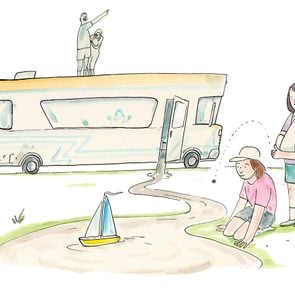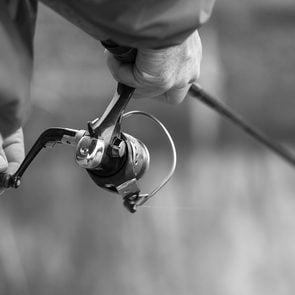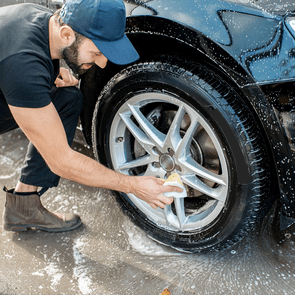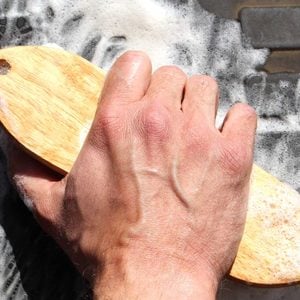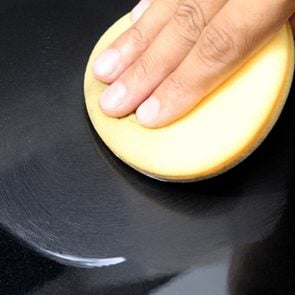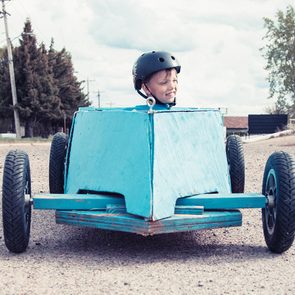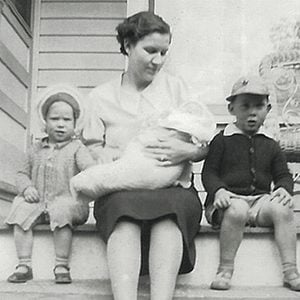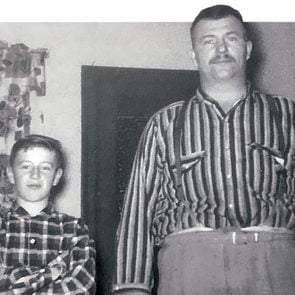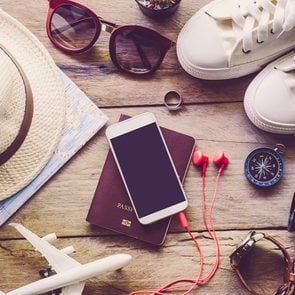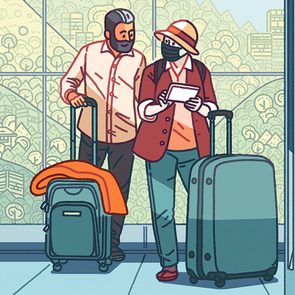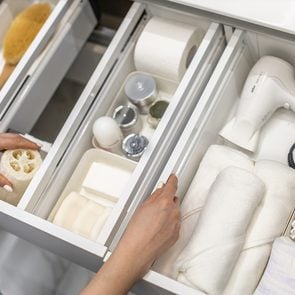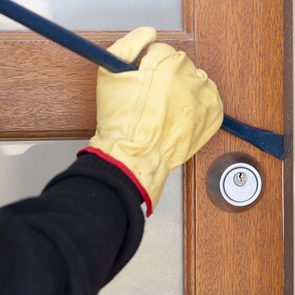The fact that our newly purchased used car had no air-conditioning didn’t deter my then-boyfriend, now husband, Derek, and I from taking a late summer road trip. After all, it was only a 13-hour drive from Montreal to Prince Edward Island. Not wanting to commit to booking accommodations, we decided to camp as we already owned a tent and felt it would provide us with the flexibility we desired.
One trip to a camping outfitters store later, we rolled down the car windows and set off. We drove through Quebec up the Saint Lawrence River, putting about 400 kilometres behind us before reaching Rivière-du-Loup, Quebec, and crossing into New Brunswick.
A Foul Start
Our first stop, a provincial park in Edmundston, New Brunswick, was busier than we had expected, but we were able to get a campsite. Standing in the dark as the rain fell, we emptied the trunk of our shiny new camping gear and old tent. In retrospect, examining the tent prior to its first use in years would have been a good idea. It wasn’t until we bedded down for the night that we smelled the mould. As the car was too small to sleep in, and the rain prevented us from sleeping under the stars, we had to stick it out in the tent. Derek, who was extremely allergic to mould, lay there wheezing and I lay beside him wondering if I’d have to take him to the emergency room.
Nail-Biting Drive
Despite our lack of sleep, we arose undeterred and set out the next morning to purchase a new tent. Did I mention this was at a time before the existence of smartphones and Google maps? En route to Moncton, despite our best efforts, we took a wrong turn and ended up on a narrow road with dense forest on either side. The fresh earthy smell, the countless shades of green and the sense of remoteness made the first few kilometres quite idyllic. Then we ran into the first of many logging trucks. I believe I held my breath that entire stretch of road and while the forest is very beautiful, it was with great relief when we made it back to a larger road with more breathing room, literally.
The Last Tent on the Island
On that particular cloudy Sunday, Moncton was devoid of any tents to buy. At that time, not all stores opened on Sundays and those that were open had put away their summer inventory in exchange for fall and winter supplies. No worries, we agreed, surely there will be some in Charlottetown.
And so we continued, ever hopeful and ever optimistic. Two hours later, we arrived in Charlottetown to begin our search once again. There was one open store with camping gear. They had, and I quote the manager, “the last tent on the island.”
Our Luck Turns Around
We took that glorious tent all over P.E.I. As we travelled around the Island, we were struck by the beauty of the landscape and the friendliness of the people. We climbed lighthouses during the day and spent the nights oceanfront in our new tent listening to the waves.
There were a few hiccups, too, of course, but on our way back to Montreal, we discussed just how lucky we’d been and maybe next time a bit more planning would be in order. We laughed about the mouldy tent, the crazy logging road and our discovery that Derek has an intolerance to shellfish. It was then I realized that a road trip is more that just getting from point A to point B and that perhaps the phrase, “half the fun is getting there,” was true. Just be flexible, optimistic, and have a sense of humour about it all—and hopefully a bit of luck.
We’ve recently upgraded from a tent to a trailer, but we still don’t plan a lot when we head out on road trips. Sometimes we get an oceanfront campsite, other times it’s a Walmart parking lot, but one thing we always come home with are memories. And as for the “last tent on the island?” It has gone from the shores of Lake Superior to the redwood forests of California. Recently, we passed it along to our son and we look forward to hearing about his adventures.
Next, check out the best road trips in Canada.
Born and raised on the far side of northern Ontario, my early life was spent surrounded by countless miles of virgin wilderness and beautiful lakes and rivers. Four generations of our family called this part of the world home. Gold miners, loggers and pioneers yes, but fishermen they were not, despite the passion that several members of the family dedicated to this peculiar sport.
The most devoted to catching the “big one” were my father, Jim, and his older brother, Chuck. The elaborate fishing excursions they put together each summer were a wonder to behold. These expeditions would begin with a two-hour car ride deep into the bush. This was followed by an arduous hike through uncharted wilderness to a remote body of water that they were convinced would be teeming with the largest pickerel and trout the world had to offer.
Sowing the seeds of doubt
No one ever seemed to question the fishing prowess of these two senior family members. Like everyone else, I assumed they were as capable in this realm of life as they appeared to be in all others. It was only after accompanying them on one of their legendary trips that I began to seriously question this popular assumption. The seeds of doubt were first planted following an innocent conversation I had with my best friend, Glenn. I was ten years old and for the first time, I was going to be joining my dad and uncle on one of their jaunts into the wilderness. “The trick to catching lots of fish is using minnows,” Glenn informed me. “They’re way better than lures and worms. I always catch the big ones first thing in the morning, that’s the ticket!”
Relaying these observations to my dad was a serious error in judgment. The next morning, I was roused from bed at 5 a.m. Never before had one of their fishing trips started so early! “It’s dark outside,” I protested.
“Everyone knows you catch the biggest fish first thing in the morning,” he reminded me. Only later did I recall that the actual catching of fish on one of these trips had never seemed like much of a priority before. The challenge had always been the journey itself. I soon realized that an even bigger mistake was not keeping quiet about Glenn’s opinion on the benefits of fishing with minnows.

Into the wild
The ride in my uncle’s half-ton truck was a sleepy blur that morning. We spent two hours navigating desolate dirt roads. My dad favoured skid roads, carved from the wilderness by logging companies years before. Finally, the truck came to a bumpy stop, the logging road having petered out into a mass of impenetrable tag alders (shrubs). Out we tumbled and, from the back of the truck came the aluminum boat. My dad and Uncle Chuck shouldered a couple of packsacks, handed me whatever remained, then led the way through the most densely tangled mess of scrub brush I’d ever seen.
As expected, there was no trail leading back to this mysterious, unnamed lake—probably because no one had been there for several decades. Our route had been charted the previous day from topographic maps, fuelled by the assurances of a couple of cronies that such hardships would be well worth the effort once we started fishing. You’d think a wilderness trek like this would be done according to long-established protocols. To begin with, anyone making such a gruelling journey would probably consider bringing along the lightest canoe possible. Our vessel of choice on the other hand was a 12-foot aluminum boat! Secondly, any self-respecting “portager” from the Voyageurs on down have always been pictured carrying their vessel upside-down on their shoulders, one man up front, the other at the stern. Instead, our clunky old boat was dragged the entire way to the lake, at no time ever leaving the ground by more than a few inches, banging and scraping over every rock and stump along the way.
Our destination, probably no more than a mile-and-a-half through the bush, seemed ten times that far. In the cool early morning, the mosquitoes congregated mere seconds after we’d stepped from the truck, crawling into every conceivable crevice of our clothing, biting, chewing and sucking till we were an itching, blood-crusted, miserable mass of humanity. Surprisingly, our arrival at the lake did little to improve our grim circumstances, yet at first glance the lake didn’t seem so bad. It was a quarter of a mile across, with its entire shoreline enclosed by 30 feet of swamp.
After the boat had been deposited into the shallow water and our supplies loaded on board, I was told we’d be catching our own bait that morning. To this end, a bucket and a long, fine-meshed fishing net were produced. The plan was simple. My dad and uncle would wade into the shallow water, one on each end of the minnow net, then drag it slowly through the waist-deep water. Initially, I was quite impressed by their resourcefulness. If Glenn was right, using minnows for bait might actually give us a fighting chance of landing a few “big ones.” Besides, the sun was up, the temperature was beginning to warm and even the mosquitoes had eased off somewhat. My spirits began to rise.
The stuff of nightmares
Dad and Uncle Chuck removed their shoes, rolled up their pant legs, then boldly waded out into the murky water. I immediately realized that what they were doing was something I would never, ever do, not for a million bucks! I could see that the bottom of the lake was nothing but muck, not the solid, sandy bottom of our lake back home. It was so disgustingly soft that the two minnow-catchers sank almost up to their knees in the black oozy mud.
As kids living on the shores of a northern lake, we grew up with a horror of bloodsuckers. We swam only in areas where they were scarce, and loved to entertain one another with wild tales of the world’s largest leeches. We also knew, without a lie, that the smaller ones were the most dangerous because they could stick to you without you realizing it and stay there for days, sucking out your blood by the gallon. You might imagine then, my heart-stopping horror when my dad and uncle emerged from the water and every square inch of their legs were covered with bloodsuckers! What really grossed me out was how they completely ignored their predicament, taking their own sweet time unloading their catch and folding up the minnow net. Even when they sat down on a piece of driftwood and started picking off the leeches, they chatted the whole time about what kind of fish they expected to catch with the minnows. In retrospect, I’m thankful I didn’t find out until later that some fishermen actually use leeches as bait. Now that’s a concept I’m sure my dad would have found irresistible.
With two dozen minnows joining our expedition, we pushed the boat out onto the lake.
The day was memorable for at least one positive reason—I caught my first fish, a one-pound perch, which my father immediately tossed back. “Can’t eat perch, they’re too bony,” he informed me. “We could have had it stuffed by a taxidermist,” I sulked.
Thankfully, the rain held off until we’d been there for a couple of hours and, when it did come, I was initially grateful as it drove away the last of the mosquitoes. An hour later, when we were thoroughly drenched, we retreated inland. As we were poling our way into a narrow inlet, however, we broke one of the oars! It was this latest disaster though, that really brought out the best in my two fishing companions. Even as they checked out the broken oar and pondered its ramifications, their eyes lit up, and at that moment I knew exactly what they were thinking. Circumnavigate the entire lake through the bush, lugging a 75-pound boat! Now that’s certainly a challenge we hadn’t anticipated. Fantastic!
“Good thing we didn’t catch any fish this morning,” my uncle remarked quite seriously as we began our hike back to the truck. “We’d just have to carry them out of here, too.”
The fishing trip from hell
Twenty-five years and a succession of fishing disasters later, my son, Jason, was finally granted the opportunity of accompanying his grandfather and great-uncle on one of their infamous excursions—this one complete with an electrical storm. Jason still refers to it as “the fishing trip from hell.”
Why such fishing excursions were a family fixture remains a mystery all these years later. My father, for instance, spent almost his entire life living beside one of the most beautiful lakes in northern Ontario; a body of water known far and wide for its bass, trout and pickerel. Yet never, not even from the end of our dock on the first day of fishing season, did I ever see my father cast a line into this all-too-convenient lake. I also never saw him catch a single fish—not even a bony perch!
Next, check out 75 funny family jokes that are sure to make you smile.
There are hundreds of car waxing products available, but ultimately they all have the same purpose: enhancing your car’s appearance and protecting its painted surfaces from the elements. For those who want to give their vehicles some extra shine beyond what factory applied paint and clear coat delivers, waxing is just the thing. You also may want to protect your car’s paint from the sun, rain and dirt. A properly applied coat of car wax can do both. Car wax can even help hide small scratches or blemishes in your car’s paint job. (Here’s advice on how to fix paint scratches yourself.)
What is car wax?
The term “car wax” can refer to paste or liquid products. Whether you’re applying wax for protection from the elements or to give your car extra shine and sparkle, all wax products fall into two categories: natural and synthetic.
Natural car wax
Most natural waxes are made from carnauba, a waxy substance harvested from the leaves of Brazil’s carnauba palm trees. Carnauba wax works on any car, but it’s especially recommended for dark-coloured vehicles because it enhances the shine of dark paint best. It offers lots of protection but wears out quickly; it needs to be re-applied every few months.
Synthetic waxes
Synthetic waxes are made of chemical polymers that bond together to form a protective coating. They’re made to bond with vehicle clear coat and paint, building up an extra layer of protection. They’re usually cheaper than natural wax, and don’t need to be re-applied as often. Also called paint sealant, synthetic waxes may be better for vehicle protection, but they won’t make your car nearly as shiny as carnauba wax.
Types of car wax
Natural and synthetic waxes are available in these three basic wax types:
Paste wax
Considered by many to be the gold standard of waxes, paste wax provides the most striking sheen of all car waxes. It takes longer to apply than other types, though, and needs to be reapplied more often.
Liquid wax
The new generation of serious car waxers often prefer liquid wax because it’s faster and easier to apply than paste, and it contains synthetic polymers for better bonding. Liquid wax dries fast (usually within a minute or two), making it trickier to apply than paste.
Spray wax
Most spray wax isn’t really designed for a full car waxing treatment, because it goes on thin and wears out fast. Spray wax works best for filling thin areas in your car’s existing wax layer, or for quick and precise detail work.
When to wax your car
Regardless of the type of wax you choose, make sure your car is perfectly clean and dry all over before starting. If you notice any rust spots, you’d be wise to repair and repaint them before waxing. Make sure your car is out of the elements, including direct sunlight, before you start.
Next, find out the best rust proofing options on the market.

I was born during the Second World War on December 27, 1942, in Swift Current, Saskatchewan. My dad had obtained a 1928 Chevy sedan that had been converted into a truck. We had many adventures with that vehicle and I’d like to share a few with you.
Remembering the Old Farm Truck
Back then, the war effort needed all the help it could get. Rubber was one of the necessary items, so inner tubes were unavailable. To solve this shortage problem, Dad was a little inventive, especially in cold weather. All the tires and rims were removed from the Chev and brought inside. The tires were then positioned with the valve holes up; next, Dad filled the tires with water. The tires were set outside until morning to freeze solid. If you could afford it, you could buy inner tubes but they were made of synthetic material that didn’t stand up. Morning came and the frozen tires were put on. Dad said the ice tires were okay until you hit a bump, then you could hear the ice slosh around as you drove.
To keep the truck running when gasoline was low, sometimes kerosene was put in the tank; it may have been cheaper than gas.
Most farmers at the time either shipped or delivered cream to the Swift Current Creamery. That has an interesting side note: Sometimes mice ventured on to the cream can lid and fell in, because someone had not closed the cream can tight. Many a mouse probably drank itself to death—no way of telling whether or not the butter tasted any different though! The main thing was that selling cream gave the farmers some money for gas, groceries and other essentials.
The incident I’m about to describe possibly happened on just such a cream run. Dad, Mom and I were driving past a garage on Cheadle Street in Swift Current when what to our wondering eye should appear but the Chevy’s driver-side door as it parted ways with us. It landed in the street with a crash. A garage attendant saw it happen and hollered, “Hey, mister, you lost your door!”
Dad was too embarrassed to stop and pick it up. We made another pass around the block and there stood our door propped against the garage wall. Dad never went back for it and hung a gunny sack over the opening from then on. A missing door, sloshing ice tires and kerosene in the gas tank, yes sir—that old farm truck of ours had character!
Next, check out this Alberta farmer’s collection of vintage John Deere tractors.
Just about every industry has its own secret language, and if you listen carefully enough on your next flight, you might notice a shared vocabulary used by flight attendants. But while you may recognize terms like “galley” and “service,” there are likely quite a few words that are far less familiar.
Flight attendants rely on their special shorthand for effective and clear communication with one another. Don’t understand what they’re talking about? There’s no reason to feel left out! Your flight attendant may not reveal these industry terms, but Bobby Laurie will. He’s a former flight attendant and the current co-host of the travel show The Jet Set, and he has the inside scoop.
We asked him to decode the key terms flight attendants around the world use in the air and on the ground. Keep reading to learn the meanings behind some of their most common code words, and look out for them on your next flight.
Sign up for our Daily Digest newsletter for more travel tips, home hacks and humour, all week long.

Takeoff and landing
Flight attendants may toss around the following words as they ready the aircraft to launch into the air or land on the ground.
Red-eye
Here’s one you’ve probably heard before, but in case you need a refresher: A red-eye is usually an overnight flight that arrives early in the morning.
“It can be a good option when you don’t want to use a day of precious sightseeing time getting to your vacation destination,” says Laurie. Instead, you can sleep on the plane and start touring as soon as you check in to your hotel.
Pink-eye
Nope, we’re not talking about conjunctivitis here. A pink-eye flight takes off earlier than a red-eye (even if only slightly) but still occurs late at night. The difference: It’s not an overnight flight.
Holding pen
The holding pen is the area surrounding the gate where passengers wait to board, often standing around or milling about.
Runner
A runner is a passenger who is late to the airport or late from a connecting flight and is quite literally running to catch their departing flight.
Spinner
A spinner is a passenger who arrives without a seat assignment and stands in the middle of the aisle, confused and likely spinning to find their seat on the airplane.
Cross-check
A cross-check “refers to one flight attendant or two double-checking that the aircraft doors are armed or disarmed correctly before departure or before opening the door,” Laurie explains.
All call
“Generally, after a cross-check, there’s an all call, where all of the flight attendants get on the internal phone system and verify with each other that the aircraft doors have been correctly armed or disarmed,” Laurie says.
Jump seat
You may have noticed the special seat that flight attendants use at takeoff, landing and any point in the flight when they must be seated. This smaller seat makes it easy for flight attendants to jump to attention. The seat itself practically jumps into a folded position when the flight attendant stands.
Specials
According to Laurie, the term specials refers “to passengers who require special attention, such as those with mobility issues. But it also includes passengers who may require any sort of extra assistance.”
Don’t miss our guide to flying budget airlines in Canada.

In flight
Just as flight attendants have specific terms for takeoff and landing activities, they have flight code words to use once you’ve reached your cruising altitude.
Privo
Privo is “an all-encompassing term that references the provisioning on the aircraft: for the flight drinks, snacks, meals, etc.,” says Laurie.
U.M.
A U.M. (say each letter, not the filler word um) is an “unaccompanied minor traveling alone who is in the flight crew’s care,” Laurie says.
Blue room
Flight attendants often call the bathroom the “blue room” among themselves. The term is a reference to the blue liquid used in aircraft toilets.
Service
The term service “refers to any time the flight attendants put the beverage and meal carts together to go into the aisle and provide snacks or drinks to the passengers,” Laurie explains.
Galley
The galley is the aircraft’s small kitchen. Here, flight attendants prepare food, snacks and beverages.
Galley queen
This is a slang term for a flight attendant who is particular—even territorial—when it comes to the galley. The galley queen often prefers others stay out of their space.

Flight attendant life
Flight attendants don’t leave behind their secret language when the plane lands or they leave the airport. They use certain terms to talk about the flight attendant lifestyle.
RON
“If you’re flying on a late-night flight, during deplaning you might hear the crew asking if this is a RON, or a Remain Overnight,” Laurie says. “They’re asking whether or not the plane is done for the day and spending the night. In other words, it’s not going back out that evening. Sometimes it’s also called a terminator.”
Originator
An originator is “the first flight of the day from an airport,” says Laurie. “Airlines are very interested in making sure the originators depart on time because a delay on that flight would cause every flight that airplane operates for the day to be behind schedule.”
Turn
“A turn is a flight pairing that the flight attendants work where they depart from a city, fly to another, then go right back to the city they departed from,” Laurie explains. “In context, a Los Angeles-based flight attendant can do a D.C. turn, a San Francisco turn [or] a Seattle turn.”
Pairing or trip
“This refers to the one-, two-, three- or four-day schedule the flight attendant is currently operating,” says Laurie. You may hear a flight attendant talking about their “pairing of flights” or the “trip they’re on.”
Commuter
According to Laurie, a commuter is “a flight attendant who lives in a city other than the city in which they’re based with the airline, such as living in Las Vegas but working flights out of Los Angeles. They would fly to work—or ‘commute’ to work—before flying for work.”
Crash pad
A crash pad is an apartment that a group of flight attendants share. “It’s just a place to crash in between flights,” Laurie says. “It’s usually used by commuters who need a place to sleep between shifts when they don’t live in the same city they work in.”
It makes sense when you consider that commuting flight attendants wouldn’t want to shell out for a motel or hotel on days when their shifts don’t leave enough time to commute home for sleep.
Next, test your knowledge of these aviation terms.
Looking for some feathered fun? We’ve gathered a hen-semble of hilarious chicken jokes that are sure to tickle your funny bone! Get ready to embrace your inner comedi-hen and enjoy a good chuckle!
Knock-knock.
Who’s there?
Chickens.
Chickens who?
No, chickens cluck—owls whoo!
What do you call a chicken looking at a bowl of lettuce?
Chicken sees a salad! —@dadsaysjokes
Why did the chicken cross the playground?
To get to the other slide.
Why are hens so good at living in the moment?
Because they don’t count their chickens before they hatch!
I grilled a chicken for two hours.
It still wouldn’t tell me why it crossed the road… —@dadsaysjokes

I started a dating website for chickens.
It’s not my regular job… I just do it to make hens meet. —@dadsaysjokes
What are the only plants chickens can take care of?
Eggplants!
Why did the hen like summer so much?
Because she was no spring chicken!

Chickens don’t go to comedy shows very often;
They don’t enjoy fowl jokes!
How did the town rooster go platinum?
He released bawk-to-bawk hits!
Why don’t more chickens work in high-stress environments?
Because they crack under pressure!
After giving birth to triplets, the hen passed out.
She must have been eggs-hausted!

What do chickens consider to be a romantic date?
A peck-nic in the park!
Why shouldn’t you tickle an egg?
They crack up!
I used to like chicken more than beef,
But that was hen and this is cow. —@zubbs99

What did the chicken tell its date?
You look im-peck-able!
Why did the chicken go to the séance?
To get to the other side!
If our chicken jokes gave you a good giggle, check out the best Canadian jokes from coast to coast!
Trying to take care of a house while managing your family’s schedule, your own affairs and an upcoming vacation can be overwhelming. It can be incredibly difficult to keep up with your cleaning checklist and general home maintenance in the best of times.
Besides locking your doors when you’re leaving, the other thing you absolutely must do is turn off your bathroom fan. It may seem trivial, but ensuring your bathroom fan is off before leaving on an extended vacation could actually save your home.
Your bathroom fan could be a fire hazard
It’s pretty simple: we step in the bathroom to take a shower and flip the fan on to help get rid of excess humidity. Then, when we’re done, we’ll usually flip it off and continue with our day. But sometimes, we’ll leave that bathroom fan on a bit longer to really get rid of all the nasty stuff (like moisture that causes household mould). From there, it’s so easy to forget about the bathroom fan completely.
There are consequences for leaving the bathroom fan on too long, though. Running it for an extended period of time can cause significant wear to the motor and may cause a fire. It’s a cause for concern, especially when you’re not home to hear your smoke detectors!
“Put simply, the typical ceiling-mounted bathroom exhaust vent fan is probably not designed or intended for ‘continuous use,'” says one Family Handyman electrical pro.
There are other contributing factors as well, such as lint and dust (which can help ignite the fire) in your exhaust fan. Here’s how to clean a bathroom exhaust fan, according to the experts at Family Handyman.
Next, eliminate potential hazards in every room with our healthy home checklist.
More than one billion users buy and sell goods on Facebook Marketplace each month—but they are not the only ones cashing in. Fraudsters are using Facebook Marketplace to steal people’s money, making it a hotbed for scams. “Unlike eBay or Amazon, Facebook Marketplace shoppers have a lot more direct interaction and conversation with sellers,” says Paul Bischoff, a privacy advocate at Comparitech, a cybersecurity company. “That creates opportunities for scammers to trick victims into a number of scams with less oversight.”
These scams may look convincing, but they share certain red flags that make them easier to spot. Below, experts discuss the most common Facebook Marketplace scams and how to avoid them, so you can protect your money from criminals while you shop.
Sign up for our Daily Digest newsletter for more tech tips, home hacks and humour, all week long.
Paying or communicating outside of Facebook
Beware of buyers and sellers who insist on communicating or receiving payments outside of Facebook’s official channels. “Scammers often want to get your money in a way that is irretrievable,” like through a wire transfer or Venmo payment, Bischoff says. “In addition to outside payment methods, they might also convince victims to call or chat outside of Facebook, where their correspondence can’t be monitored.” Facebook’s Purchase Protection policies only cover payments made through PayPal or Facebook Checkout, so there is no guarantee you will get your money back if you pay with another method. Sticking to official systems will protect you if something goes wrong, according to experts.
Here’s more expert advice for safer online shopping.
Mailing items
When purchasing items through Facebook Marketplace, “buyers run the risk of not receiving the items they pay for, either via non-delivery or by being delivered anything but what they pay for,” says Chris Hauk, a consumer privacy expert at Pixel Privacy. His advice: Use Facebook Marketplace’s filters to narrow your search to the items available for local pickup, and meet the seller in a public, well-lit, and visible location so you can examine the product before paying. If you must receive an item by mail, Hauk suggests requesting a shipping tracking number and paying with Facebook-supported payment methods such as PayPal or Facebook Checkout to protect your purchase.
Selling counterfeit items
Don’t be fooled by a great deal on a designer purse or rare gaming console. Facebook Marketplace is filled with counterfeit or pirated items with price tags suspiciously below market rate. “Always keep in mind the old adage: If something seems too good to be true, it probably is,” Hauk says. “If a seller is asking well below the usual asking price for an item, they’re likely up to something.” In addition to looking up the typical price of an item beforehand, Hauk recommends checking a seller’s profile for negative reviews and avoiding newly created accounts with no reviews at all. You should also request multiple photos and even a video of the item before purchasing.
Overpaying the seller
Believe it or not, sellers can get scammed by fraudsters, too. In one common scheme, a buyer will use counterfeit funds to pay the seller more than the requested amount for the item, then claim to have made a mistake and request a partial refund. The victim will return the overage amount, but the original payment never ends up in the seller’s account, so the victim is stuck paying the bill while the criminal pockets the money. Hauk says you can protect yourself from these Facebook Marketplace scams by declining overpayments and requesting all payments through Facebook-approved channels. (Again, PayPal and Facebook Checkout are your best bets here.)
Requesting advance payments
You should never agree to pay for an item before receiving it, according to Matthew Paxton, founder of tech and gaming website Hypernia. Known as a “reservation” or “pay-in-advance” scheme, “this is one of the easiest ways to get scammed,” he says. A fraudster may tell you that the item is popular and ask you to place a deposit or advance payment to secure your spot. Odds are, you will never receive the item, and the scammer will disappear with your money. Paxton advises exchanging the money and the item at the same time, preferably in a well-lit, public location. When meeting a seller in person, Facebook suggests bringing another person with you or sharing your meeting plan with a friend or family member as an added precaution.
Creating fake accounts
Before purchasing something on Facebook Marketplace, take a close look at the seller’s profile. Some scammers set up fake Facebook accounts to trick people into buying fake or non-existent items and then disappear with the money. One of the key things to look for is the date that the Facebook account was created. Brand-new accounts should be a red flag, according to Burton Kelso, a tech expert at Integral, an on-site computer service. “In this day and age, most people will have a Facebook that was created at least over 10 years ago,” he says. “If you see a Facebook account that was created within the past couple of months, buyer beware.”
Listing phony rentals
Heads up, house hunters: Not all apartment and home rental listings on Facebook Marketplace are legitimate. “We have found that this is a niche that is rife with scammers,” says Sebastian Illing, cofounder of Alpaca Technology, which filters through thousands of listings on Facebook. “There are various apartment rental scams we’ve encountered, such as listings using fake or misleading pictures, bait-and-switch rental prices, charging illegal fees for background checks, and even posting rentals owned by other people.” Don’t fill out an application or transfer money until you have toured the property in person and confirmed its availability.
Here’s how to protect yourself from Facebook Messenger scams.

Selling items that don’t work
One of the most popular Facebook Marketplace scams is selling an item that doesn’t work, according to Kelso. “This can happen especially when purchasing computers or other tech devices,” he says. The seller knows that the item is broken but hopes that you won’t check the item before handing over the money. When you purchase items like electronics, Kelso recommends turning on and testing the devices to make sure that they work properly before paying. And “don’t allow yourself to be pressured to make a deal,” Hauk says. “If the seller—or buyer, for that matter—pushes you to make a fast decision, walk away from the deal. If it smells fishy, it probably is.”
Advertising fake giveaways
Like many other Facebook Marketplace scams, giveaways that seem too good to be true probably are. Bad actors post links to fake cryptocurrency giveaways on their profiles, hoping that unsuspecting users will click on them, says Patrick Moore, co-founder of the cryptocurrency site CryptoWhat. “Scammers are able to use [Facebook] as a space for their own advertising purposes because anyone can list something on the page without any verification process in place,” he explains. By clicking on the link, victims might download malware onto their computers, allowing hackers to access sensitive information like passwords to email and bank accounts.
Find out the password mistakes hackers hope you’ll make.
Requiring car deposits
Demand for vehicles on Facebook Marketplace is booming, but buyers should think twice before placing a deposit on one. Scammers often ask buyers to transfer a small fee to hold a car, then give them a fake address when it’s time to meet up, according to Piyush Yadav, owner of the price comparison website Ask Any Difference. Instead of trusting an online seller’s promises, do your research ahead of time by checking Kelley Blue Book or other trusted sites to learn what you should expect to pay. Facebook’s Help Center also recommends requesting a vehicle history report and scheduling a car inspection before buying.
Inconsistent pricing
If a seller changes the price of an item after you message them, walk away, Paxton says. It could be a sign that you are dealing with a scam called bait-and-switch, in which a scammer lures in customers with a low price but then tries to sell them a different, more expensive item. “As soon as they show signs of inconsistency, back out,” Paxton says. “It’s not worth the drama.” Facebook Marketplace’s guidelines also suggest declining requests from the seller “to make additional payments for shipping or other previously unlisted charges after the transaction is complete.”
Find out why you need to stop commenting on those viral Facebook memes.
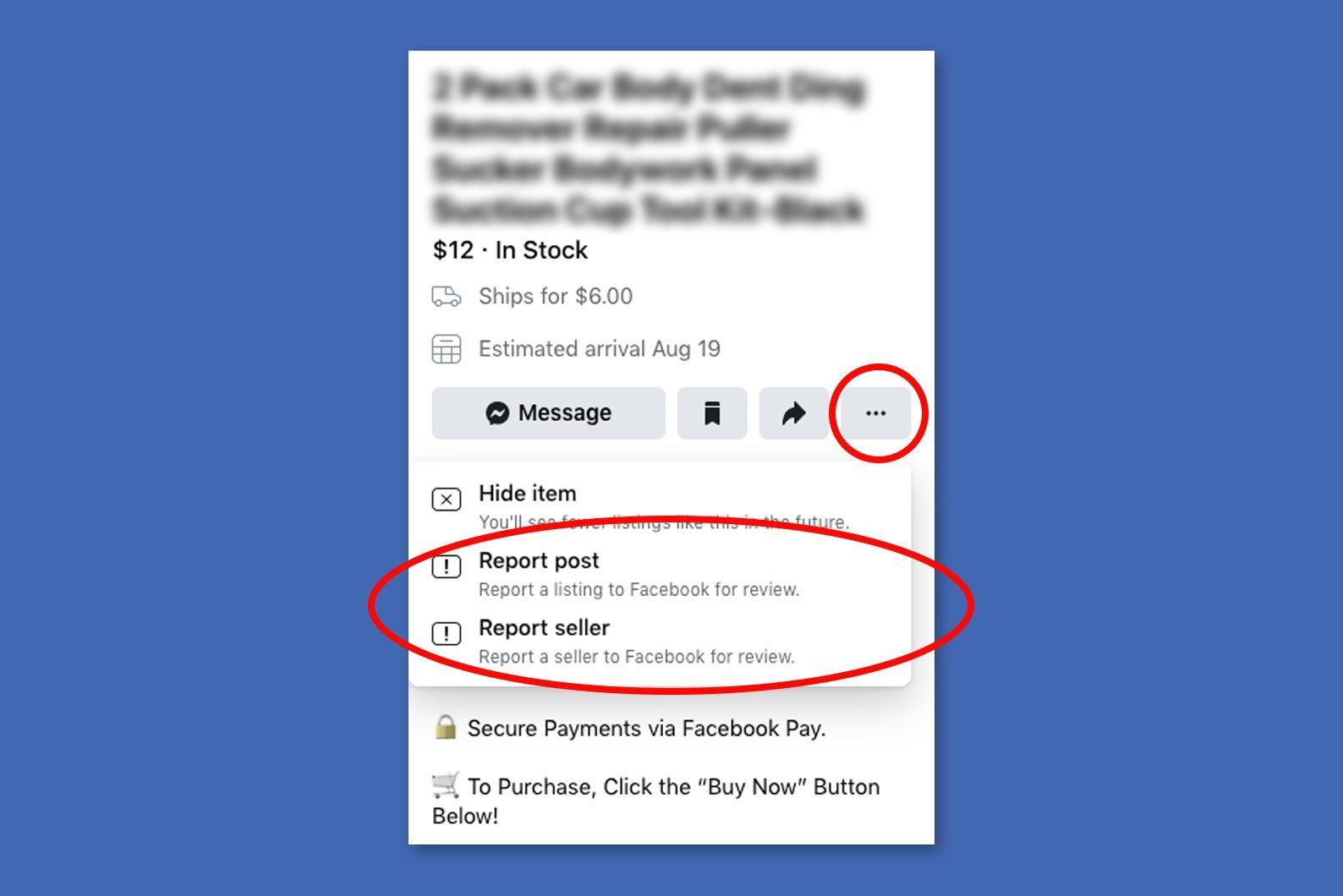
What to do if you think you’ve been scammed
Facebook Marketplace is constantly searching for scams and removing listings that violate their policies, but they don’t catch everything. If you believe you have been scammed, you should immediately report the incident to Facebook and block the scammer, experts say. To report a seller on Facebook Marketplace, click the Marketplace icon in the left-hand corner of your screen, click the listing from the seller that you want to report, and then click on the name of the seller. From there, click the three-dot icon and select Report Seller; then follow the on-screen instructions. You can also alert the Canadian Anti-Fraud Centre.
Next, brush up on all the latest scams in Canada.
If you’ve suddenly got the urge to poop before that big interview or presentation, you may be dealing with stress poop.
Stress poop “is not an official diagnosis, but it definitely is a thing,” says Amanda Sauceda, MS, RD, a nutritionist and dietitian from Long Beach, California. “There is a strong mind-gut connection, which is why how you feel [emotionally] can impact your gut.”
The gut-brain is what causes you to run for the bathroom when you’re feeling frazzled. You may poop, or you may just feel the urge. Stress poop may look the same as your regular poop, or it can be looser.
The good news? It’s not necessarily a symptom of an underlying condition, according to David Leventhal, MD, an assistant professor of gastroenterology, hepatology, and nutrition at the University of Pittsburgh School of Medicine. “Having a stress poop, in and of itself, can be a variation of normal physiological response to stress and not reflect a problem, per se—much like a increase in heart rate when feeling scared or anxious is a normal part of that emotional experience.”
Here’s what your poop can reveal about your health.
When to see your doctor
If you have more than three loose bowel movements in a day, go more than three days without having a bowel movement, or experience ongoing stomach pain, it may be a good time to make an appointment with your GP to rule out irritable bowel syndrome (IBS) or inflammatory bowel disease (IBD).
Faris Pacha, MD, a gastroenterologist at Gastro Health in Birmingham, Alabama also recommends seeking medical attention if you see blood in your poop, start losing weight unexpectedly, or if you wake up at night to poop. Black poop or pale-looking poop also can warrant a visit with a white coat.
When speaking with your doctor, don’t hold anything back when describing your symptoms. (They’ve heard it all.)
“Everyone has a different ‘normal’ but it’s important to not be shy about bringing up any concerns to your doctor,” Pacha says.
Here are 20 symptoms you should never ignore.
Preventative measures
Barring anything more serious, stress poop will probably go away when you’re more relaxed—that is, once the interview is over or you maybe-sorta nailed the presentation, you may go back to your regular routine. But if you remain stressed, that could keep it coming, so to say.
“You can get used to stress, but that doesn’t make you less stressed,” Sauceda says. “This is what I call ‘sneaky stress.’ It’s important to check in with yourself and learn how to work through the stress versus getting used to it or ignoring it.” Being mindful of your anxiety level can help you predict when you might need a bathroom in a hurry.
Diet may help, as can using the bathroom before the start of a stressful event, Dr. Leventhal says, adding, “Avoiding eating just prior to [about 30 minutes before] the event is another strategy, as the act of eating increases the movement of the colon and when combined with acute stress.”
Next, find out which foods make you poop.
New iPhone hacks are some of our favourite things to discover, and believe it or not, there always seems to be another trick that promises to make our lives easier. This most recent one involves your iPhone’s volume buttons, which can do much more than adjust sound.
If you’ve only ever used your iPhone’s volume buttons to toggle the volume up and down, you’re missing out on the many shortcuts for which they can be used. Not sure where to start? Here are the best ways to use those volume buttons for more than just music.
Sign up for our Daily Digest newsletter for more home hacks, health advice and humour, all week long!
How to use your iPhone’s volume buttons
Take photos
If you need an extra hand to take photos, this handy hack can help. It works with portrait, traditional photo and panorama modes when shooting from the rear camera, and with portrait and traditional photo modes for the front camera. Just open the Camera app and press either volume button to take a photo or start a panorama. You can end the panorama with another tap of the button, or you can hold the button down the entire time to take the panorama.

Take videos
You can use the same trick to take a video. Just switch to video mode in the Camera app, then press either of the volume buttons to start taking a video. You can press it again to stop, or you can hold down the button the entire time to take a video—it’ll stop recording once you release the button.
Take photo bursts
A photo burst makes editing iPhone photos easier because it gives you more options to choose from. If you have an iPhone XS, iPhone XR or newer, you can press and hold the volume up button to take burst shots. To allow for that, go to Settings > Camera, then turn on “Use Volume Up for Burst.”
Scan documents
Your iPhone’s built-in document scanner will work in apps such as Files, Mail, Notes and Reminders. Since this function uses the Camera app, you can press either volume button to snap a scan of the document you need instead of pressing the shutter button on the screen.
Snooze an alarm clock
For those who use their iPhone instead of a traditional alarm clock, this is the trick you need to know. If you’re half asleep and can’t be bothered to find the “Snooze” on your phone screen in the morning, just press either volume button to snooze your alarm—just make sure you have the “Snooze” function enabled for that particular alarm.
Turn off an alarm clock
If you have toggled off the “Snooze” option for your alarm, clicking either volume button will turn off the alarm.
Find out how Canada’s 3G network shutdown could impact your devices.
Call emergency services
When you’re in an actual emergency and can’t spend time unlocking your iPhone to call 911, Apple has made things easier. To quickly get ahold of emergency services, just hold down the side lock button and either volume button (or all three buttons) until the “Emergency Call” slider pops up. Swipe the SOS icon to the right to place the call.
Force a restart
If your phone is frozen and there’s no way to restart it, you might be forced to complete a factory reset. To do so, press the volume up button, then volume down button, then the side lock button until you see the Apple logo on a black background. Once your lock screen reappears, it means a hard reset has been performed. Unlike a regular restart, which happens at the software level, a hard reset happens at the hardware level, which can help when your phone is frozen or buggy. Keep in mind that a factory reset wipes your entire phone, so make sure you have backed it up on the cloud recently.
Turn off Face ID or Touch ID quickly
You can temporarily prevent Face ID from unlocking your iPhone. Press and hold the side lock button and either volume button for two seconds. You’ll see the same screen as when you’re calling emergency services. After the sliders appear, press the side button to immediately lock your iPhone, which will lock automatically if you don’t touch the screen for a minute or so.
Silence an incoming call
Want to quickly silence a call when you’re busy? Pressing either volume button will silence incoming regular calls as well as FaceTime calls, and will also stop vibrations if your phone is on vibrate mode.
Sources:
- Apple: “If your iPhone won’t turn on or is frozen”
- Apple: “Use the side, Home, and other buttons on your iPhone”
- Apple: “Disable Face ID”
Discover more iPhone hacks you’ll wish you’d known sooner.
